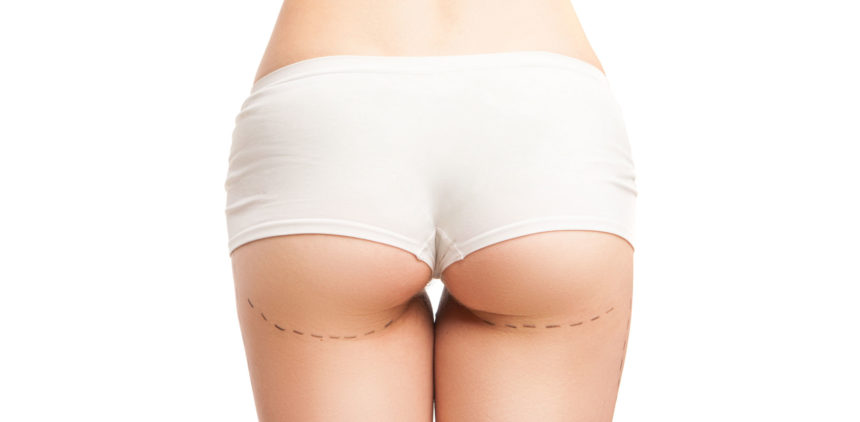Releasing of the fibrous septae is used to treat cellulite, for improving its appearance with different aesthetic medicine or surgical treatments. Cellulite is much more common in women than men; the causes are still unclear but, regardless of the causes, it is a blemish that causes quite a number of problems.
The role of fat and releasing of the fibrous septae
There are various theories that attempt to explain the mechanism underlying cellulite formation and thus scientifically clarify what the causes are. One of the theories explains the formation of cellulite as linked to structural changes in the adipose tissue. The nodules and the dimples are thought to develop when the fat pushes against the skin while the fibrous septae pull downwards, thus creating the typical appearance of orange peel cellulite. In this way, the aim is also to answer the question as to why thin women can also have cellulite.
Cellulite is therefore the result of alterations in the adipose tissue, which follow this path:
- Increase in the number and volume of adipose cells
- Changes in shape
- Cellular thickening with the formation of collagen fibres
- Fat cells are encapsulated in the collagen fibres
- Micronodules form that become palpable and visible macronodules
- Hardening of the connective fibrous septae
- Anchoring downwards
- Formation of orange-peel skin
Treatments: releasing of the fibrous septae
While for many doctors the problem has no solution, for many others the list of effective treatments is very long. These include:
- Surgery
- Mesotherapy
- Non-invasive devices
- Radiofrequency
- Ultrasonic cavitation
- Cryotherapy
- Endermology
- Pressotherapy
- Needling
- Laser
- Shockwaves
- Tissue stabilized-guided subcision
All treatments require the advice of expert doctors and/or plastic surgeons.
Treatments that focus on releasing the fibrous septae are aimed at combating cellulite at the structural level.
Releasing of the fibrous septae: subcision
This technique requires local anaesthesia. The doctor will use a thin needle with a hook for releasing the hardened connective tissue (fibrous septae) that are responsible for the onset of cellulite. It is recommended for dimples and hollows, but not for firming or for reducing fat. The side effects of this surgical treatment are:
- Slight pain
- Bruising
- Alterations in skin pigmentation
The treatment is demanding and you must always rely on an expert plastic surgeon. Subcision involves the use of a special instrument with a small scalpel on the tip. During the procedure, which is performed under local anaesthesia, the fibrous septae are released and their bleeding causes:
- Tissue repair
- Consequent reduction of the orange-peel appearance.
The treatment is performed in the surgery or outpatients’ department, has a very short duration (a few minutes) and does not require any special preparation of the skin.
At the end of the procedure, it is recommended that a compression sheath or graduated compression stockings should be worn for 20-30 days after surgery. Post-treatment bruising and ecchymosis are gradually reabsorbed over the following days.
It is a minor surgical intervention, but still surgical, so it is advisable to consult a qualified plastic surgeon. As with all surgical procedures, there are side effects and contraindications that should be discussed with the doctor before undergoing treatment.
You must always have realistic expectations to avoid disappointment.
Releasing of the fibrous septae: laser
Thanks to the emission of high-frequency energy, lasers produce a thermal effect (heat and light) on the tissues to be treated. They are widely used in surgery and lately also for various applications in dermatology.
Lasers can be used to act on the fibrous septae that are responsible for:
- Lumps
- Thickening
- Loss of skin elasticity
Lasers allow:
- Releasing of the fibrous septae
- Dissolving of fat
- Firming of tissues
After releasing the fibrous septae, the skin becomes firm and free of dimples. Local anaesthesia and adequate facilities are required. The treatment should be performed by an expert doctor or by a plastic surgeon because it has a number of contraindications that should not be underestimated.
Releasing of the fibrous septae: tissue stabilized-guided subcision
This treatment, which is a non-surgical version of subcision, is approved by the FDA and has a mandatory CE certificate as medical device, and is used to release the fibrous septae of cellulite without surgery.
It is a minimally invasive outpatient treatment that requires local anaesthesia and lasts 45 minutes.
The results are:
- Long-term and can last through 5 years
- Improved appearance of cellulite
The treatment should be performed by an expert doctor or plastic surgeon. Tissue stabilized-guided subcision, approved by the FDA for the thighs and buttocks, improves the appearance of cellulite by releasing the fibrous septae. The device works thanks to a vacuum action that allows releasing of the fibrous septae, which leads to raising of the superficial subcutaneous tissue and reduction of the skin’s orange-peel appearance.
Tissue stabilied-guided subcision: what to know
The treatment in brief:
- Mild side effects (pain, bruising and hemosiderosis)
- Improvement in the appearance of the skin on the thighs and buttocks
- Leaves no scars
- Results lasting through 5 years
- Fast procedure and without convalescence
- Non-surgical
- Minimally invasive
The treatment should be performed by an expert doctor or plastic surgeon in accredited facilities. Expectations should be realistic, so it is best to talk to your doctor before undergoing treatment.
Releasing of the fibrous septae: cellulite, physical exercise and diet
Diet and physical exercise are beneficial if cellulite is a problem but they do not necessarily cure orange-peel skin. Nevertheless, for those who are overweight or obese, cellulite does improve with weight loss.


